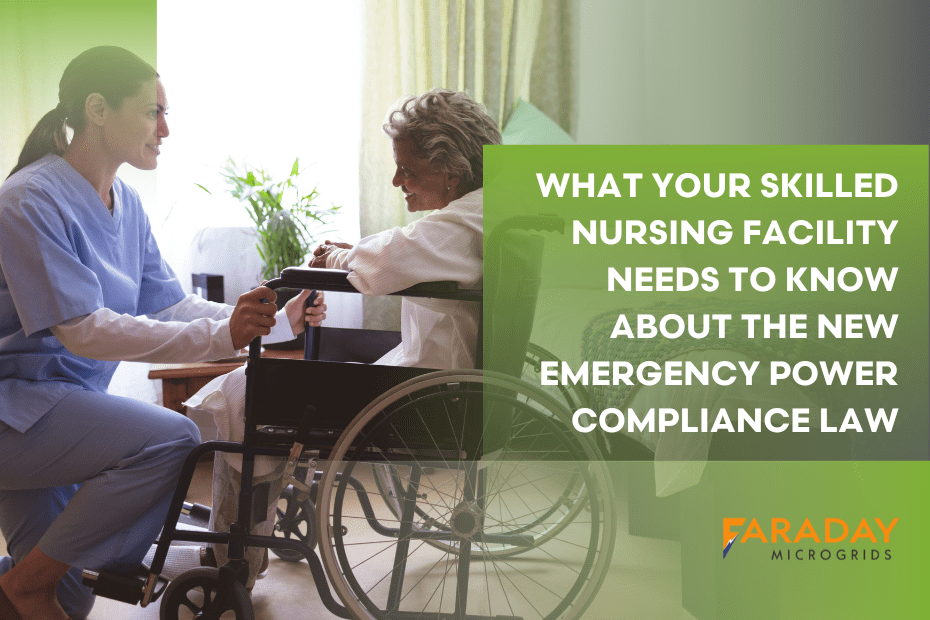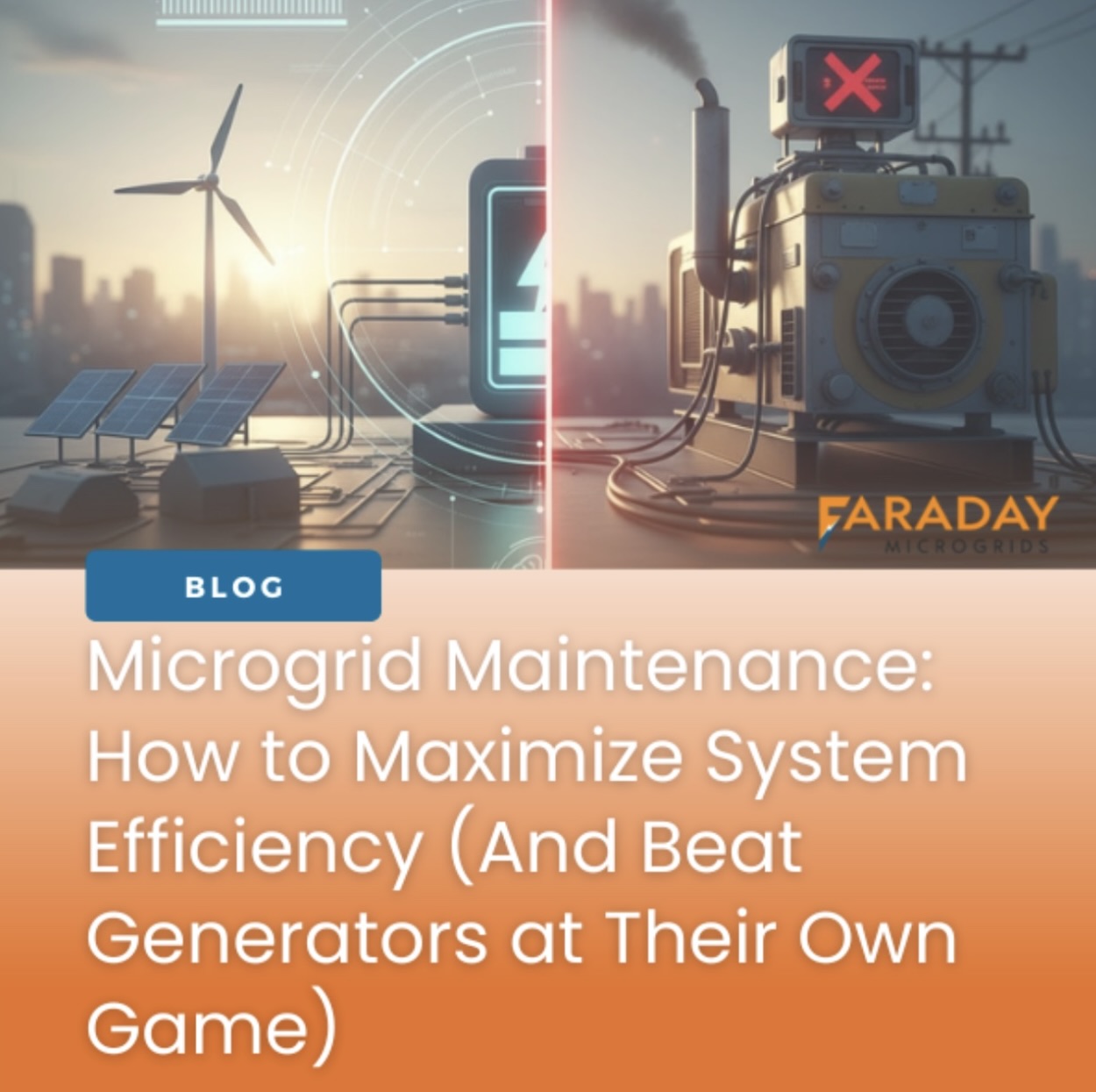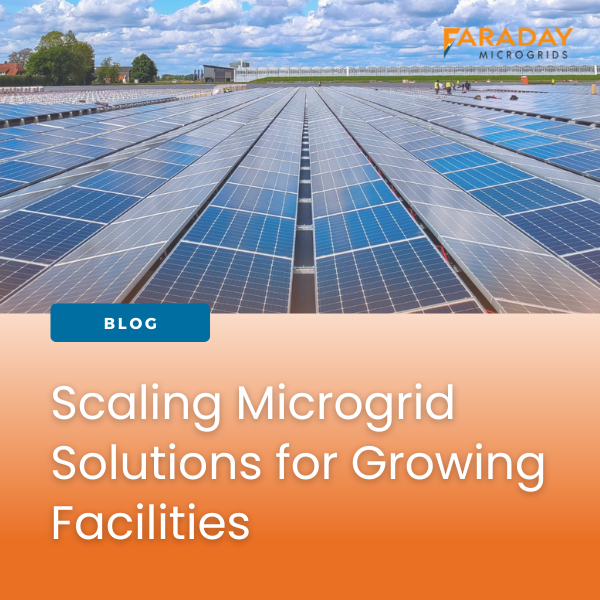The Presence of a Microgrid at a Medical Facility Increases Reliability and Lowers the Possibility of Energy Waste. Here’s How.
On January 1, 2023, a new law went into effect in the state of California. This law requires all Skilled Nursing facilities to have 96 hours of emergency power to support life-saving equipment by January 1, 2024 (including, but not limited to HVAC, refrigerators, ventilators, AEDs, crash carts with defibrillators, IV and feeding pumps, nebulizer machines, suction equipment, and medication dispensing units).
While the law allows for this to be achieved with diesel or equivalent generators and onsite or delivered fuel, extraordinary hurdles may effectively eliminate these as a legitimate solution. Renewable energy microgrids (energy generation, storage, and controls) are a potentially far more cost-effective solution. Microgrids can do double duty to yield tax credits and significant utility cost savings and can give facilities broader recognition as green and sustainable.
What Your Facility Needs to Do to Achieve Compliance
First, schedule a facility analysis. The experts at Faraday Microgrids have over 11 years of unparalleled industry experience in healthcare energy. At Faraday Microgrids we can give you a comprehensive understanding of what you’ll need to meet the state’s requirements for backup energy solutions.
Faraday has also put together a comprehensive facility assessment that you can access entirely online. Using this tool, you can identify your existing energy systems and become aware of any deficiencies, while making plans to resolve those deficiencies.
Next, get to know your compliance options.
Know Your Options for Backup Energy Solutions
The team at Faraday has looked at the potential options for electrical system revisions, and has identified three different solutions.
1. Add to the emergency system of the existing facility.
If your facility’s existing generator has adequate capacity, loads that have become “essential” may be transferred to the existing emergency panel. However, the capacity of the generator(s) will need to be sufficient. There will have to either be adequate onsite fuel storage or a contractually-guaranteed delivery method to ensure continuity of power for 96 hours.
2. Create a new standby system to back up your pre-existing systems.
The second solution is a dedicated new backup power source that would serve equipment now required to be supported during grid outages. Presumably, such systems would supplement the capacity of existing diesel generators and both would have to meet the 96 hour service requirement. In addition, the supplementary system will need to meet HCAI seismic compliance requirements
3. Install a microgrid to back-up the entire system.
For financial, space, air quality, or numerous other reasons, many facilities will profit from deploying microgrids. When configured correctly, such a system could operate continuously to slash facility operations cost, yield extraordinary tax credits and accelerated depreciation, generate clean energy, and provide the needed backup power. Unlike diesel generators that are essentially “dead assets”, the microgrid meets multiple imperatives and addresses the increasing demands of clients, patients, and families to show a commitment to sustainability.
Summary
The new law requires all California SNFs to have an onsite power source specially seismically certified and able to support up to 96 hours of power.
Ready to ensure compliance before January 2024? The first step would be to conduct an onsite power facility assessment.
Contact the experts at Faraday Microgrids today and learn more about which compliance option is best for you.






